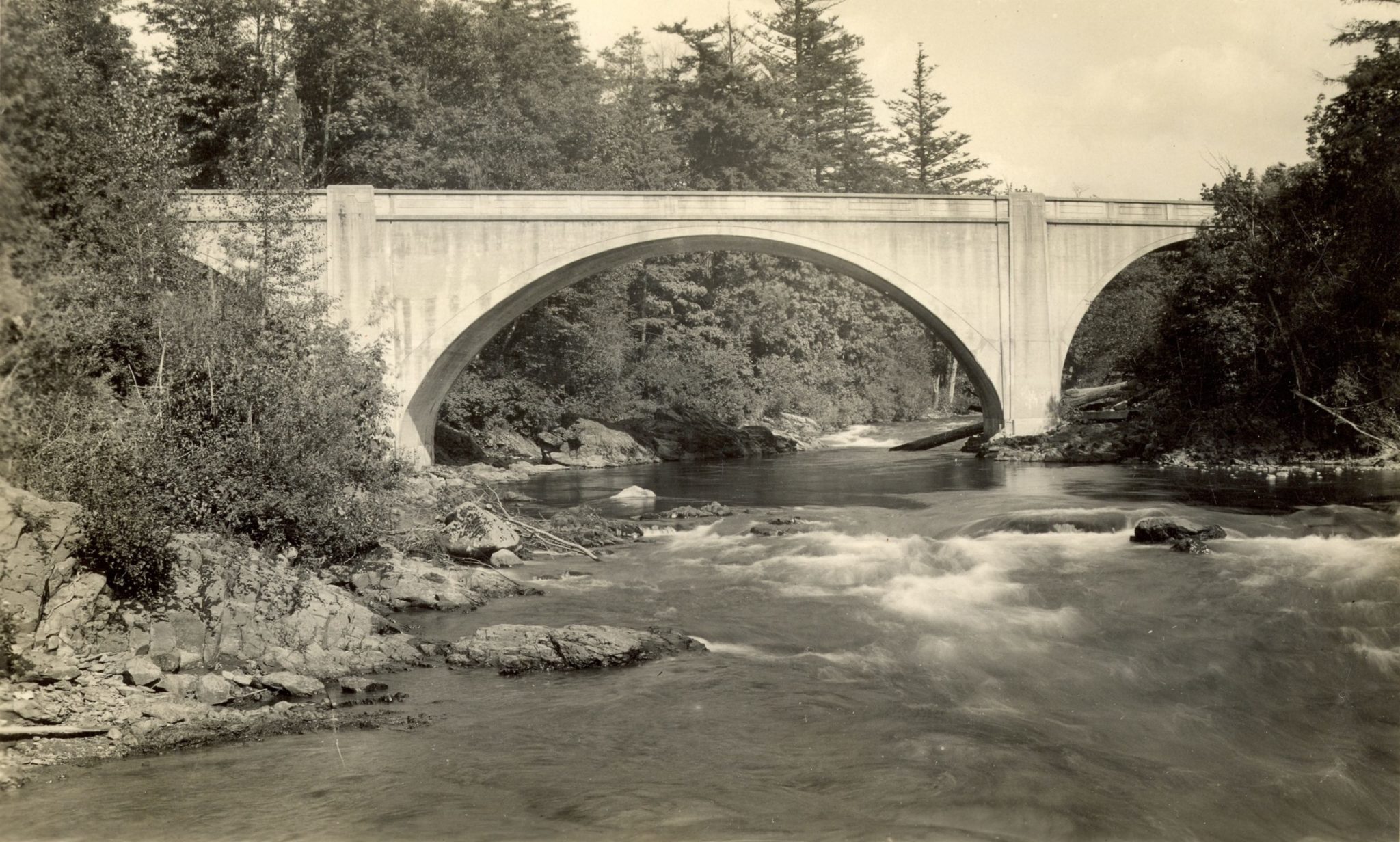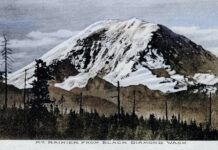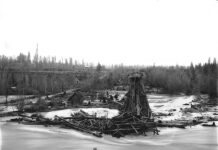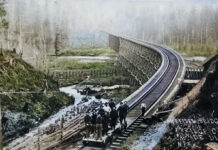The Kanaskat Bridge over the Green River was built in 1918 to provide a more convenient route between Cumberland and Selleck. Though the nearby Palmer train station provided a junction point for rail traffic, automobiles faced a 15 mile drive to cover the five-mile distance between the two towns. Following construction this bridge tied together the Cumberland-Kanaskat and Kanaskat-Kangley roads providing an automobile connection over the Green River. On the left end of this bridge stood Tom Whitehouse’s service station, store, and auto-camp, which served visitors and tourists who increasingly traveled by car.
The three-arch concrete span was built to designs of Daniel B. Luten, an Indianapolis bridge-builder and engineer. The two ends were half-arches, highlighting the center cantilevered span. Thousands of similar designed bridges were built throughout the United States using the patented Luten arch. Because it was constructed during the last year of World War I, very little steel was used to reinforce the arches, as the war effort had priority over the precious metal. In 1955 the bridge was partially dismantled to make way for modern structural updates, yet the classic design elements remained. This July 5, 1932 photo was taken by Thomas P. Blum, a King County inspector who snapped over 500 bridge pictures during a three year period, from 1931-34. Image #474.11.16 comes courtesy of an archive exhibit, “The Bridges of King County through the Lens of T.P. Blum.” Next week, more about Tom Whitehouse and his family’s ties to Kanaskat.







